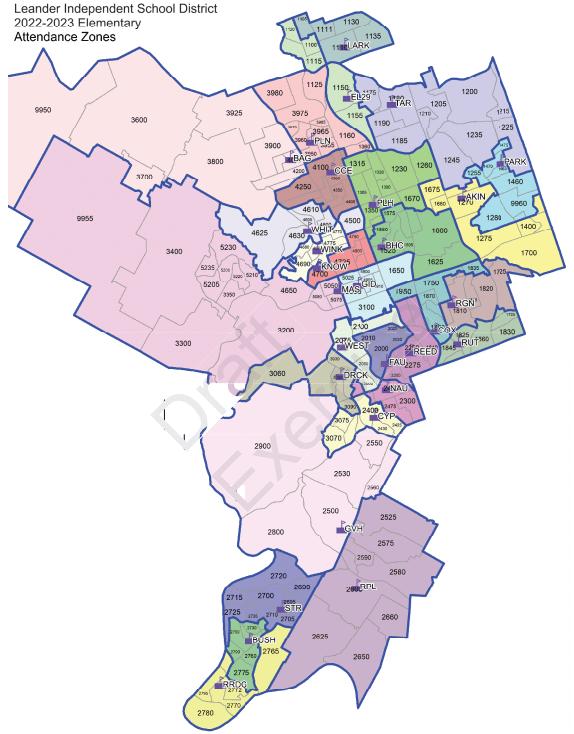
By LILLY CHANDLER, Hill Country News
The Leander ISD Board of Trustees began discussing the idea of district-wide rezoning as a possible plan to accommodate projected growth by balancing campus enrollments to maximize building utilization.
“As we’ve seen in our demographer’s report, we will continue to have uneven growth of the northern parts of our district while (adding) new housing, while the central parts of our district will slowly regenerate,” an LISD facilities team member said
The district’s facilities team presented what an attendance zoning scenario could look like if LISD maximizes the utilization of its existing buildings. This discussion was intended to “inform decision-making regarding future elections and facilities master planning,” the district said, and was not the formal start of an attendance zoning process.
“It’s useful to ask questions like, ‘OK, now we know what it looks like if we did maximize (facility usage); now, where do we go from here? How do we stay focused on our core beliefs that students must be at the heart of these decisions, which includes all elements that impact their overall student experience?’” Board President Trish Bode said.
The exercise impacts over 10,000 students, removes the need for more high school capacity, adds only two elementary schools and delays the need for a 10th middle school. It also adds specific impacts to transportation, program and operational needs.
The board discussed concerns over disrupting students within two miles of their zoned school that get moved. The district said that it does not believe that voter feedback from the failed bond election calls for a reversal of its commitment to strong neighborhood schools, and that it is hopeful that there are opportunities available that avoid disrupting students.
“Behind all these neighborhood codes, those are numbers. But there are kids behind those codes,” Place 5 Member Sade Fashokun said.
When LISD starts a zoning process, it will first launch an attendance zoning-specific survey and listening initiative before an official project charter comes to the Board, setting the parameters for attendance zoning modifications.
Community members can remain engaged by following LISD Board meetings, reviewing the attendance zoning exercise presentation, participating in surveys open through Jan. 3 on ThoughtExchange and Let’s Talk, and coming to events, like the Jan. 6 Board Cafe event, to speak with trustees directly.
The district will not be making any additional changes to the 2022-23 school year attendance zones, beyond the changes approved in Spring 2021 with the opening of Elementary School #29.
Trustees directed administration to bring back more information on zoning factors, such as parameters to keep kids closer to their school, transportation impacts, and creating schools of choice to balance enrollments.
Hill Country News has been serving Cedar Park, Leander and Northwest Austin since 1968.

